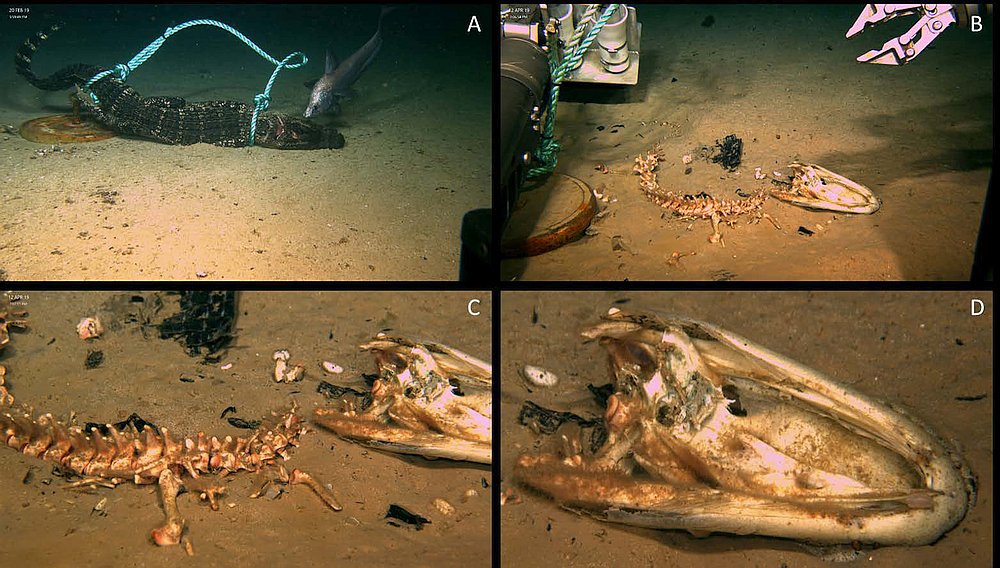Dead alligators on sea floor did not become fossils
Researchers wanted to know what would happen to the bodies of three dead alligators, Alligator mississippiensis, if they dropped them at the bottom of the sea. They were placed 2,000 m (6,600 ft) down in the Gulf of Mexico. When the scientists returned 51 days later, what they found left them stunned. The first alligator had been eaten down to its bones, and was covered in a brown fuzz. They later discovered that this brown fuzz was a bone-eating worm, called Osedax, consuming the ‘gator remains. The second alligator, in less than 24 hours was being devoured by giant isopods, Bathynomus giganteus. And the third alligator carcass was totally missing. Calculations suggested that “the bite strength needed to cut cleanly through our rope was consistent with that of a large shark.”

The myth of animals dying and falling to the bottom of the sea where they will be slowly covered in sediment and fossilized is still widespread today. This likely explains the scientists’ surprise at an outcome which is really consistent with common sense. As this study clearly shows, unless animals are very rapidly covered by sediment after death, predation and decay will prevent their preservation.
The conditions needed for the large-scale fossilization observed in sedimentary rock layers all over the earth were present in the Noahic Flood only 4,500 years ago.
See also creation.com/dead-crocodiles.
- McClain, C.R., and 4 others, Alligators in the abyss: The first experimental reptilian food fall in the deep ocean, Plos One, 20 Dec 2019.
- Burton, B., Dead alligators dropped into the sea lead to a surprising find; msn.com, 12 Jan 2020.


Readers’ comments
Comments are automatically closed 14 days after publication.